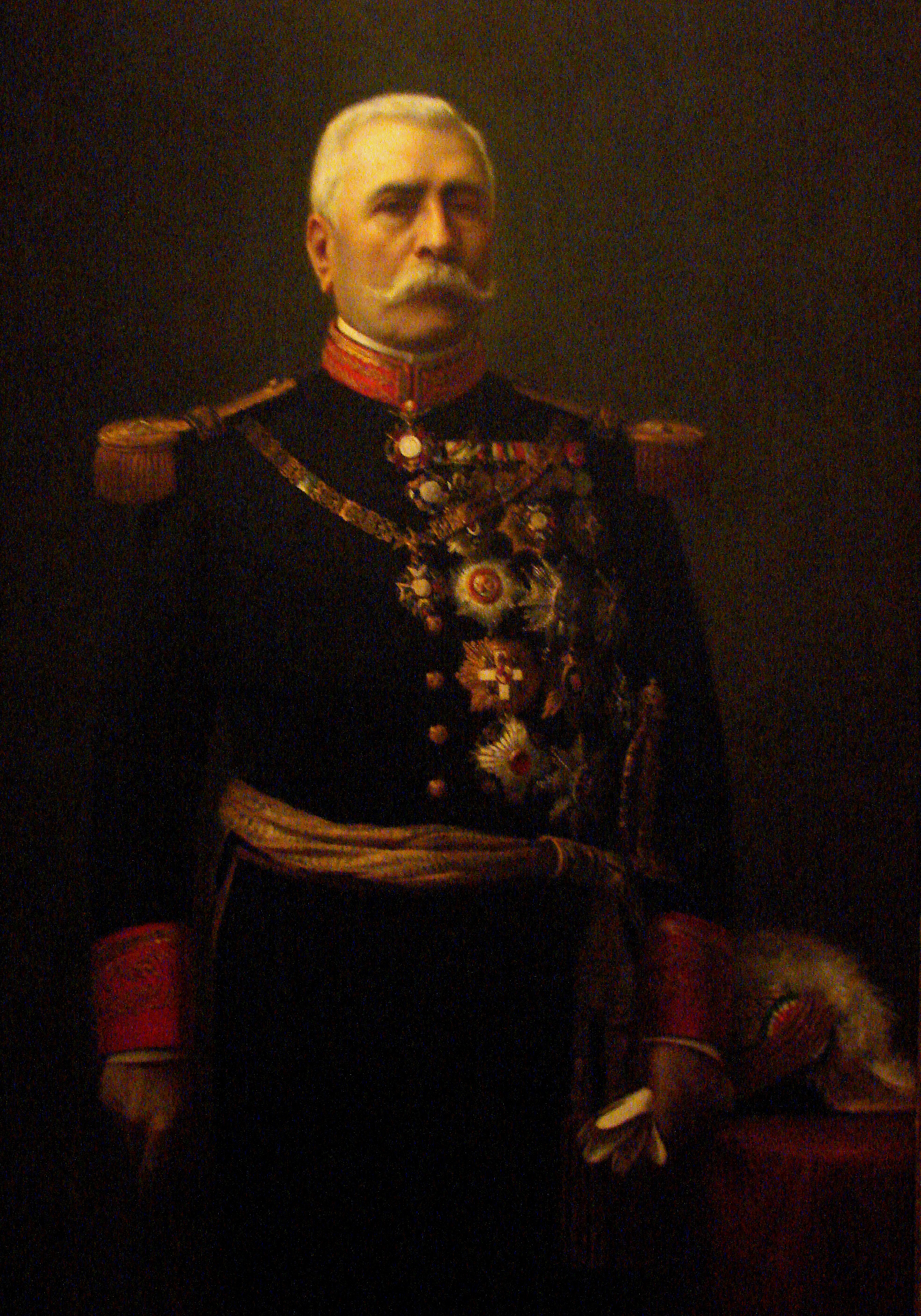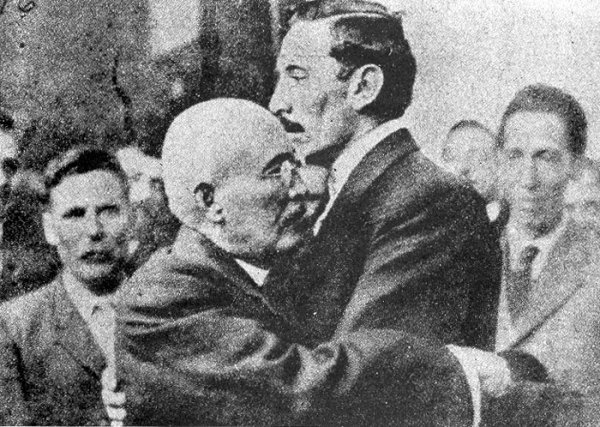|
Rellano, Chihuahua
Rellano is a railroad station in the south of the Mexico, Mexican state of Chihuahua (state), Chihuahua. It is located in the southern portion of the Bolsón de Mapimí river basin. During the Mexican Revolution it was the site of two major battles during Pascual Orozco's rebellion; the First Battle of Rellano and the Second Battle of Rellano. References Buildings and structures in Chihuahua (state) Railway stations in Mexico Transportation in Chihuahua (state) {{mexico-struct-stub ... [...More Info...] [...Related Items...] OR: [Wikipedia] [Google] [Baidu] |
Railroad Station
A train station, railway station, railroad station or depot is a railway facility where trains stop to load or unload passengers, freight or both. It generally consists of at least one platform, one track and a station building providing such ancillary services as ticket sales, waiting rooms and baggage/freight service. If a station is on a single-track line, it often has a passing loop to facilitate traffic movements. Places at which passengers only occasionally board or leave a train, sometimes consisting of a short platform and a waiting shed but sometimes indicated by no more than a sign, are variously referred to as "stops", " flag stops", " halts", or "provisional stopping places". The stations themselves may be at ground level, underground or elevated. Connections may be available to intersecting rail lines or other transport modes such as buses, trams or other rapid transit systems. Terminology In British English, traditional terminology favours ''railway s ... [...More Info...] [...Related Items...] OR: [Wikipedia] [Google] [Baidu] |
Mexico
Mexico ( Spanish: México), officially the United Mexican States, is a country in the southern portion of North America. It is bordered to the north by the United States; to the south and west by the Pacific Ocean; to the southeast by Guatemala, Belize, and the Caribbean Sea; and to the east by the Gulf of Mexico. Mexico covers ,Mexico '' The World Factbook''. . making it the world's 13th-largest country by area; with approximately 12 ... [...More Info...] [...Related Items...] OR: [Wikipedia] [Google] [Baidu] |
Chihuahua (state)
Chihuahua (), officially the Free and Sovereign State of Chihuahua ( es, Estado Libre y Soberano de Chihuahua), is one of the 31 states which, along with Mexico City, comprise the Political divisions of Mexico, 32 federal entities of Mexico. It is located in northwestern Mexico, and is bordered by the states of Sonora to the west, Sinaloa to the southwest, Durango to the south, and Coahuila to the east. To the north and northeast, it shares an extensive U.S.–Mexico border, border with the U.S. adjacent to the U.S. states of New Mexico and Texas. Its capital city is Chihuahua City; the largest city is Ciudad Juárez. Although Chihuahua is primarily identified with its namesake, the Chihuahuan Desert, it has more forests than any other state in Mexico, aside from Durango. Due to its variant climate, the state has a large variety of fauna and flora. The state is mostly characterized by rugged mountainous terrain and wide river valleys. The Sierra Madre Occidental mountain range ... [...More Info...] [...Related Items...] OR: [Wikipedia] [Google] [Baidu] |
Bolsón De Mapimí
The Bolsón de Mapimí is an endorheic, or internal drainage, basin in which no rivers or streams drain to the sea, but rather toward the center of the basin, often terminating in swamps and ephemeral lakes. It is located in the center-north of the Mexican Plateau. The basin is shared by the states of Durango, Coahuila, Chihuahua, and Zacatecas. It takes its name from Mapimí, a town in Durango. The largest city in the basin is Torreón. Parts of the basin host much industrial and agricultural activity. However, most of the region is sparsely populated. Geography The Bolsón de Mapimí is a large area, measuring more than north to south and the same distance east to west, lying between 25 and 29 degrees north latitude. The total area is about and the average elevation is . The Greater Bolsón de Mapimí covers adjacent areas extending north to the Rio Grande, which are similar in terrain and climate but have streams which have outlets to the Gulf of Mexico. The Bols ... [...More Info...] [...Related Items...] OR: [Wikipedia] [Google] [Baidu] |
Mexican Revolution
The Mexican Revolution ( es, Revolución Mexicana) was an extended sequence of armed regional conflicts in Mexico from approximately 1910 to 1920. It has been called "the defining event of modern Mexican history". It resulted in the destruction of the Federal Army and its replacement by a revolutionary army, and the transformation of Mexican culture and government. The northern Constitutionalist faction prevailed on the battlefield and drafted the present-day Constitution of Mexico, which aimed to create a strong central government. Revolutionary generals held power from 1920 to 1940. The revolutionary conflict was primarily a civil war, but foreign powers, having important economic and strategic interests in Mexico, figured in the outcome of Mexico's power struggles. The United States played an especially significant role. Although the decades-long regime of President Porfirio Díaz (1876–1911) was increasingly unpopular, there was no foreboding in 1910 that a revoluti ... [...More Info...] [...Related Items...] OR: [Wikipedia] [Google] [Baidu] |
Pascual Orozco
Pascual Orozco Vázquez, Jr. (in contemporary documents, sometimes spelled "Oroszco") (28 January 1882 – 30 August 1915) was a Mexican revolutionary leader who rose up to support Francisco I. Madero in late 1910 to depose long-time president Porfirio Díaz (1876-1911). Orozco was a natural military leader whose victory over the Federal Army at Ciudad Juárez was a key factor in forcing Díaz to resign in May 1911. Following Díaz's resignation and the democratic election of Madero in November 1911, Orozco served Madero as leader of the state militia in Chihuahua, a paltry reward for his service in the Mexican Revolution. Orozco revolted against the Madero government 16 months later, issuing the Plan Orozquista in March 1912. It was a serious revolt which the Federal Army struggled to suppress. When Victoriano Huerta led a coup d'état against Madero in February 1913 during which Madero was murdered, Orozco joined the Huerta regime. Orozco's revolt against Madero somew ... [...More Info...] [...Related Items...] OR: [Wikipedia] [Google] [Baidu] |
First Battle Of Rellano
First or 1st is the ordinal form of the number one (#1). First or 1st may also refer to: *World record, specifically the first instance of a particular achievement Arts and media Music * 1$T, American rapper, singer-songwriter, DJ, and record producer Albums * ''1st'' (album), a 1983 album by Streets * ''1st'' (Rasmus EP), a 1995 EP by The Rasmus, frequently identified as a single * ''1ST'', a 2021 album by SixTones * ''First'' (Baroness EP), an EP by Baroness * ''First'' (Ferlyn G EP), an EP by Ferlyn G * ''First'' (David Gates album), an album by David Gates * ''First'' (O'Bryan album), an album by O'Bryan * ''First'' (Raymond Lam album), an album by Raymond Lam * ''First'', an album by Denise Ho Songs * "First" (Cold War Kids song), a song by Cold War Kids * "First" (Lindsay Lohan song), a song by Lindsay Lohan * "First", a song by Everglow from ''Last Melody'' * "First", a song by Lauren Daigle * "First", a song by Niki & Gabi * "First", a song by Jonas Brothe ... [...More Info...] [...Related Items...] OR: [Wikipedia] [Google] [Baidu] |
Second Battle Of Rellano
The Second Battle of Rellano of 22 May 1912 was an engagement of the Mexican Revolution between rebel forces under Pascual Orozco and government troops under General Victoriano Huerta, at the railroad station of Rellano, Chihuahua. The battle was a setback for Orozco, who had defeated another government army at the First Battle of Rellano in March of the same year. Background After the overthrow of Porfirio Díaz's regime, which he took part in, Pascual Orozco became dissatisfied with the way that Francisco Madero was running Mexico. He was also thwarted in his personal ambitions when Madero appointed Venustiano Carranza as minister of defense, and Abraham González as governor of Chihuahua.Scheina, p. 16 As a result, in March 1912, Orozco formally declared himself to be in rebellion against Madero.McLynn, p. 131 On 24 March 1912, Orozco defeated a federal army under General José González Salas which had been sent to capture him, near the railroad station of Rellano. This ... [...More Info...] [...Related Items...] OR: [Wikipedia] [Google] [Baidu] |
Buildings And Structures In Chihuahua (state)
A building, or edifice, is an enclosed structure with a roof and walls standing more or less permanently in one place, such as a house or factory (although there's also portable buildings). Buildings come in a variety of sizes, shapes, and functions, and have been adapted throughout history for a wide number of factors, from building materials available, to weather conditions, land prices, ground conditions, specific uses, prestige, and aesthetic reasons. To better understand the term ''building'' compare the list of nonbuilding structures. Buildings serve several societal needs – primarily as shelter from weather, security, living space, privacy, to store belongings, and to comfortably live and work. A building as a shelter represents a physical division of the human habitat (a place of comfort and safety) and the ''outside'' (a place that at times may be harsh and harmful). Ever since the first cave paintings, buildings have also become objects or canvasses of much artisti ... [...More Info...] [...Related Items...] OR: [Wikipedia] [Google] [Baidu] |
Railway Stations In Mexico
Rail transport (also known as train transport) is a means of transport that transfers passengers and goods on wheeled vehicles running on rails, which are incorporated in tracks. In contrast to road transport, where the vehicles run on a prepared flat surface, rail vehicles (rolling stock) are directionally guided by the tracks on which they run. Tracks usually consist of steel rails, installed on sleepers (ties) set in ballast, on which the rolling stock, usually fitted with metal wheels, moves. Other variations are also possible, such as "slab track", in which the rails are fastened to a concrete foundation resting on a prepared subsurface. Rolling stock in a rail transport system generally encounters lower frictional resistance than rubber-tyred road vehicles, so passenger and freight cars (carriages and wagons) can be coupled into longer trains. The operation is carried out by a railway company, providing transport between train stations or freight customer facili ... [...More Info...] [...Related Items...] OR: [Wikipedia] [Google] [Baidu] |
.jpg)




